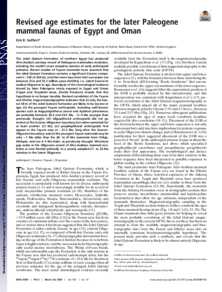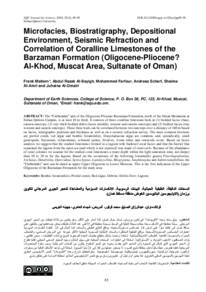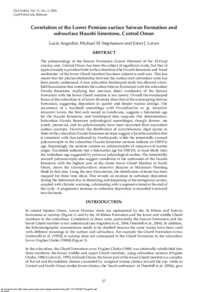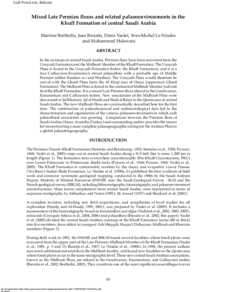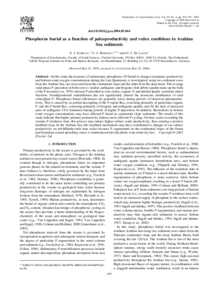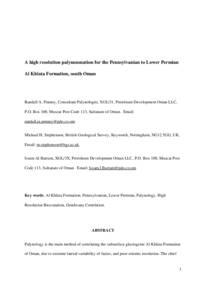وثيقة
Revised age estimates for the later paleogene mammal faunas of Egypt and Oman.
المعرف
DOI: 10.1073/pnas.0600689103
المصدر
Proceedings of the National Academy of Sciences of the United States of America. v. 103, 13, p. 5000-5005
الدولة
United States.
مكان النشر
Washington
الناشر
The National Academy of Sciences of the USA.
ميلادي
2006-03-28
اللغة
الأنجليزية
الملخص الإنجليزي
The Jebel Qatrani Formation of northern Egypt has produced Afro-Arabia's primary record of Paleogene mammalian evolution, including the world's most complete remains of early anthropoid primates. Recent studies of Fayum mammals have assumed that the Jebel Qatrani Formation contains a significant Eocene component (≈150 of 340 m), and that most taxa from that succession are between 35.4 and 33.3 million years old (Ma), i.e., latest Eocene to earliest Oligocene in age. Reanalysis of the chronological evidence shared by later Paleogene strata exposed in Egypt and Oman (Taqah and Thaytiniti areas, Dhofar Province) reveals that this hypothesis is no longer tenable. Revised correlation of the Fayum and Dhofar magnetostratigraphies indicates that (i) only the lowest 48 m of the Jebel Qatrani Formation are likely to be Eocene in age; (ii) the youngest Fayum anthropoids, including well known species such as Aegyptopithecus zeuxis and Apidium phiomense, are probably between 30.2 and 29.5 Ma, ≈3-4 Ma younger than previously thought; (iii) oligopithecid anthropoids did not go extinct at the Eocene-Oligocene boundary but rather persisted for at least another 2.5 Ma; (iv) propliopithecid anthropoids first appear in the Fayum area at ≈31.5 Ma, long after the Eocene-Oligocene boundary; and (v) the youngest Fayum mammals may be only ≈1 Ma older than the 28- to 27-Ma mammals from Chilga, Ethiopia, and not 4-5 Ma older, as previously thought. Whatever gap exists in the Oligocene record of Afro-Arabian mammal evolution is now limited primarily to a poorly sampled 27- to 23-Ma window in the latest Oligocene.
ISSN
0027-8424
قالب العنصر
مقالات الدوريات

